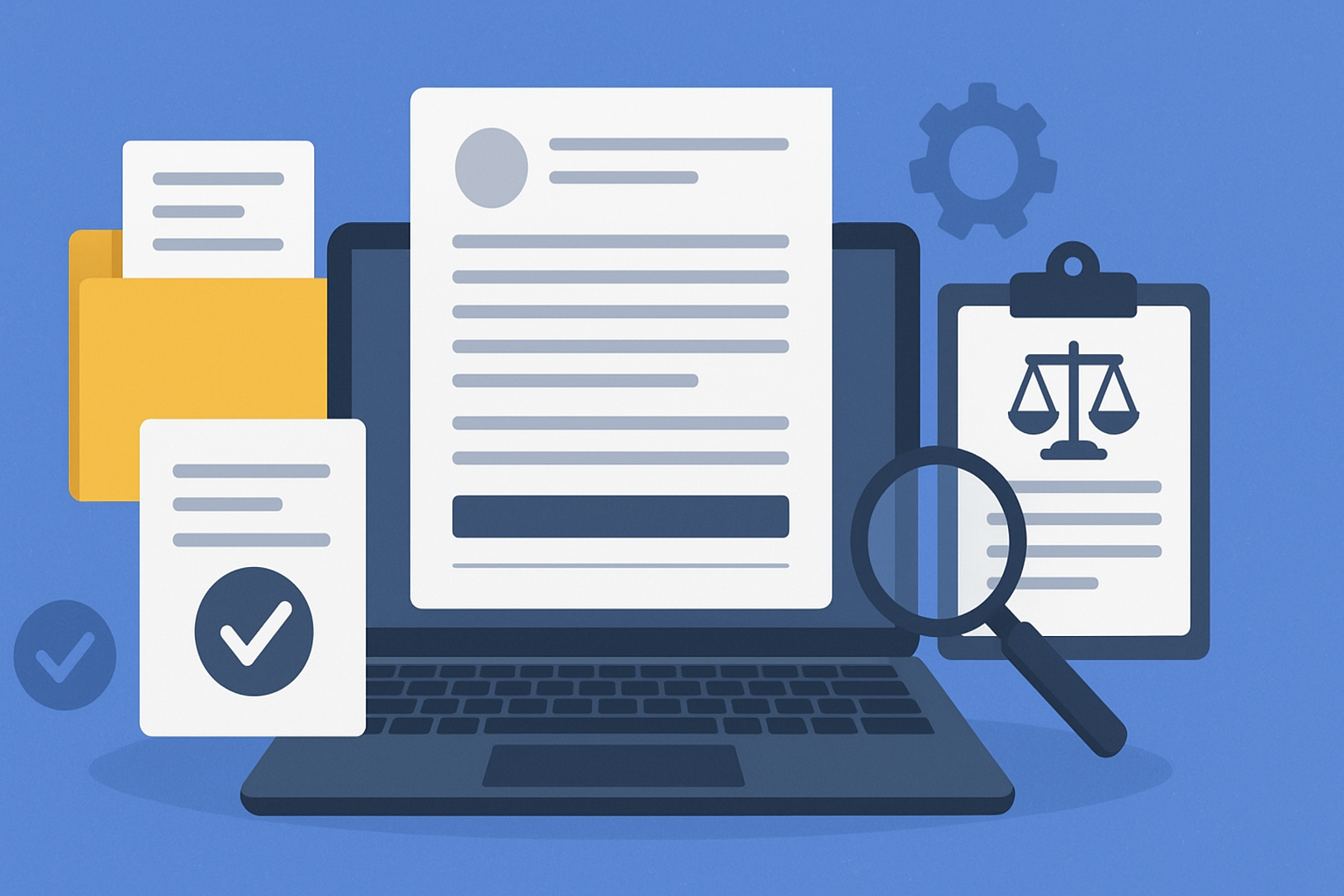
Best Legal Document Automation Tools 2025: Reviews, Guide & Comparison
Legal professionals spend countless hours creating documents that follow similar patterns and structures. The repetitive nature of contract drafting, agreement preparation, and legal correspondence consumes valuable time that could be dedicated to strategic client work. Modern document automation tools address this challenge by leveraging artificial intelligence and workflow automation to transform how legal teams create, review, and manage documents.
The landscape of legal technology has evolved dramatically over the past few years. AI systems can analyze, summarize, and identify key clauses in legal documents with speed and accuracy, while automation platforms handle routine document assembly tasks. This combination enables law firms to deliver faster service while maintaining accuracy and compliance standards.
Understanding Legal Document Automation
Document automation simplifies the process of creating and managing documents by using technology to handle repetitive tasks. Instead of drafting each document from scratch, you can rely on pre-built templates and logic to quickly produce accurate and professional results. The technology encompasses template creation, conditional logic, data integration, and workflow management capabilities.
Modern automation systems go beyond simple mail merge functionality. They incorporate intelligent decision trees that adapt document content based on specific case circumstances, client information, and jurisdictional requirements. This approach ensures consistency while accommodating the nuanced needs of different legal matters.
Product Siddha’s Approach: As a Customer Lifecycle Agency, Product Siddha recognizes that legal document automation represents one component of comprehensive business process optimization. Their AI automation services help legal firms integrate document creation workflows with client management, billing, and communication systems using no-code platforms like N8N, Make.com, and Zapier combined with OpenAI capabilities.
Top Legal Document Automation Tools for 2025
ContractWorks
ContractWorks offers a low-cost contract management system rated number one in ease of use, support, and ease of setup. The platform focuses on simplicity and user adoption, making it accessible for firms transitioning from manual processes.
Strengths:
- Intuitive interface requiring minimal training
- Cost-effective pricing structure
- Strong customer support reputation
- Quick implementation timeline
Limitations:
- Limited advanced automation features
- Basic template customization options
- Fewer integration capabilities
DocuSign CLM
DocuSign CLM is a go-to legal documents software for in-house teams handling lots of contracts. It covers the full contract lifecycle including drafting, approvals, signatures and renewals all in one place. The platform combines document creation with comprehensive contract lifecycle management.
Strengths:
- Complete contract lifecycle coverage
- Integrated e-signature functionality
- Strong enterprise-level features
- Extensive integration ecosystem
Limitations:
- Higher cost for comprehensive features
- Complex setup for smaller firms
- Occasional third-party sync issues
Ironclad
Ironclad keeps contracts fast and compliant with powerful approvals and conditionality. It adds modern, next-generation collaboration capabilities using Ironclad Connect plus the only browser-based DOCX editor. The platform emphasizes collaborative workflow management and real-time document editing.
Strengths:
- Advanced collaboration features
- Browser-based document editing
- Sophisticated approval workflows
- Strong compliance management
Limitations:
- Learning curve for advanced features
- Premium pricing structure
- May be overwhelming for simple needs
Gavel
Gavel can save 90% of drafting time and hours of review for legal contract management by automating the process. The platform focuses specifically on legal document automation with lawyer-designed templates and workflows.
Strengths:
- Significant time savings potential
- Built by lawyers for legal professionals
- Specialized legal document focus
- Industry-specific template library
Limitations:
- Limited to legal document types
- Smaller user community
- Fewer general business integrations
Essential Features for Legal Document Automation
Key features to look for in a legal document automation tool are dynamic template creation, seamless integration with existing legal software, robust security measures, and a searchable repository for efficient document management. These capabilities form the foundation of effective automation implementation.
Critical Features to Evaluate:
- Template Flexibility: The ability to create custom fields, complex conditional logic, and dynamic templates is essential
- Security Compliance: Built-in security features like encryption and access controls ensure sensitive client information is protected
- E-Signature Integration: Electronic signatures provide a quick and convenient way to collect legally binding agreements
- Workflow Automation: Real-time collaboration and easy integration with existing document management systems
Implementation Strategy and Best Practices
Successful legal document automation requires careful planning and systematic implementation. Begin by identifying your most time-consuming document types and analyzing their common elements. Focus on high-volume, standardized documents that follow predictable patterns and structures.
Product Siddha recommends starting with simple document types before progressing to complex agreements. Their experience with AI automation across various industries demonstrates that gradual implementation builds user confidence while minimizing disruption to existing workflows.
Feature Comparison Matrix
| Tool | AI Integration | Template Library | E-Signatures | Collaboration | Pricing |
|---|---|---|---|---|---|
| ContractWorks | Basic | Standard | Yes | Good | Low |
| DocuSign CLM | Advanced | Extensive | Integrated | Excellent | High |
| Ironclad | Advanced | Comprehensive | Yes | Excellent | Premium |
| Gavel | Moderate | Legal-focused | Yes | Good | Moderate |
AI Integration and Future Developments
Artificial intelligence capabilities continue expanding within legal document automation platforms. AI identifies key clauses like confidentiality agreements, termination conditions, and dispute resolution mechanisms while providing intelligent suggestions for document improvements and risk assessment.
Machine learning algorithms analyze document patterns and user behavior to suggest optimizations and identify potential issues before they become problems. This proactive approach reduces review time while improving document quality and compliance.
Product Siddha’s AI Automation Advantage: Their expertise with OpenAI integration and no-code platforms enables legal firms to create custom automation workflows that extend beyond standard document creation. By connecting legal tools with CRM systems, billing platforms, and client communication channels, they build comprehensive practice management ecosystems.
ROI and Performance Metrics
Measuring the success of legal document automation requires tracking multiple performance indicators. Time savings represent the most immediate benefit, with leading platforms claiming reductions of 50-90% in document creation time. Error reduction, consistency improvements, and client satisfaction metrics provide additional value measurements.
Calculate return on investment by comparing automation tool costs against the value of time saved, error reduction benefits, and improved client service capabilities. Most firms discover that automation pays for itself within the first few months of implementation through increased efficiency and reduced revision cycles.
Selection Criteria and Decision Framework
Choose legal document automation tools based on your firm’s specific needs, technical capabilities, and growth plans. Consider factors including document volume, complexity requirements, integration needs, and budget constraints. Evaluate user adoption potential and training requirements to ensure successful implementation.
Check whether the software integrates with the tools you’re already using or plan to use in the future. Compatibility with existing practice management systems, billing software, and communication platforms determines long-term value and operational efficiency.
Conclusion
Legal document automation represents a fundamental shift in how law firms approach document creation and management. The combination of AI capabilities, workflow automation, and collaborative features enables unprecedented efficiency gains while maintaining professional standards and compliance requirements.
Success depends on selecting appropriate tools, implementing systematic workflows, and training teams effectively. Product Siddha’s experience demonstrates that comprehensive automation strategies extending beyond document creation to encompass entire practice management ecosystems deliver the greatest value and competitive advantage.
The investment in legal document automation technology pays dividends through reduced operational costs, improved client service, and enhanced team productivity. Firms that embrace these tools position themselves for sustained growth and operational excellence in an increasingly competitive legal marketplace.
Frequently Asked Questions
1: What is legal document automation and why is it important?
Legal document automation uses software and AI to streamline repetitive document creation tasks, such as contracts, agreements, and correspondence. It reduces drafting time, improves accuracy, ensures compliance, and allows legal teams to focus on strategic client work.
2: Which legal document automation tools are best in 2025?
Leading tools include ContractWorks (simple, cost-effective), DocuSign CLM (full contract lifecycle), Ironclad (collaboration and compliance), and Gavel (lawyer-designed templates and workflows). Selection depends on your firm’s size, document volume, and workflow needs.
3: How does AI enhance legal document automation?
AI identifies key clauses, analyzes patterns, provides intelligent suggestions, and ensures compliance. It helps reduce review time, improve document quality, and automate decision-making in workflows, making legal processes faster and more reliable.
4: What features should law firms look for in automation tools?
Essential features include dynamic templates with conditional logic, e-signature integration, secure data management, workflow automation, and collaboration capabilities. These ensure efficiency, compliance, and adaptability to different legal matters.
5: How can Product Siddha help implement legal document automation?
Product Siddha integrates legal automation tools with CRM, billing, and communication systems using no-code platforms like N8N, Make.com, and Zapier. Their AI automation expertise helps law firms create efficient, end-to-end workflows that maximize time savings, accuracy, and productivity.
